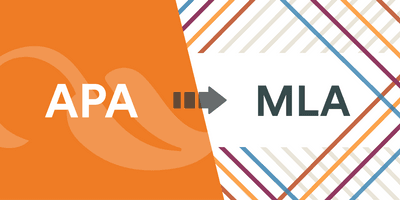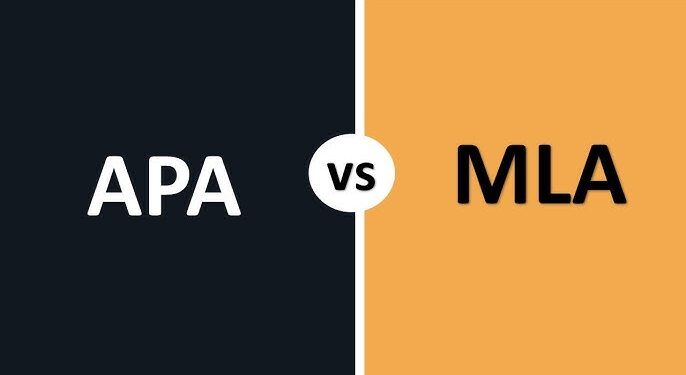Introduction
APA vs MLA: A Guide To Formatting Literature Papers Aside from being aesthetically pleasing, appropriate formatting is crucial for maintaining clarity, consistency, and accurate source attribution when writing academic papers, especially in the literary arts.
The American Psychological Association (APA) style and the Modern Language Association (MLA) style are the two main citation formats used in American institutions.
Despite being utilized for academic writing, these formats differ in their general formatting, structure, and citation requirements.
The format style you select will mostly rely on the topic matter and the particular instructions given by your professor or institution, whether you are writing an essay about a Shakespearean play, evaluating a scholarly article, or analyzing a modern novel.
MLA is typically the recommended format in literature classes, however knowing the distinctions between APA and MLA is crucial to meeting your university’s academic standards.
APA vs. MLA: What’s the Difference?
To begin, let’s take a quick look at the primary differences between APA and MLA formatting styles. These differences generally pertain to how sources are cited in-text, how the bibliography or reference list is structured, and other structural elements of your paper, such as page layout and title formatting.
- APA Style is commonly used in the social sciences, such as psychology, sociology, and education, though it is also applicable to some areas of the humanities. APA formatting focuses heavily on dates and the timeliness of sources, which is a crucial aspect of research in these fields. APA is concerned with providing the reader a quick understanding of how recent the information is and how it contributes to current trends and research.
- MLA Style, on the other hand, is most commonly used in literature, philosophy, cultural studies, and other fields within the humanities. It places more emphasis on authorship and the development of ideas over time. MLA tends to be more flexible in terms of citation structure, particularly when dealing with sources such as books, articles, and media.
The differences between the two systems primarily revolve around citation conventions, including how you cite authors, the use of dates, page numbers, and the structure of the final reference page. While both APA and MLA are designed to ensure scholarly precision, their approaches to structuring academic work are distinct.

1. General Formatting Guidelines
APA vs MLA: A Guide to Formatting Literature Papers While there are some variations in how sources are cited and referenced between APA and MLA, both styles have similar overall structural guidelines. Here’s a look at how your paper should be formatted in each style.
APA Formatting Guidelines
- Paper Size: APA formatting generally uses an 8.5” x 11” standard paper size.
- Font: The recommended font for APA papers is Times New Roman with a size of 12 pt.
- Margins: The margins should be set to 1 inch on all sides of the page.
- Line Spacing: The entire paper should be double-spaced, including the title page, abstract, body text, and reference page.
- Title Page: An APA paper includes a title page with the paper’s title, the author’s name, and the name of the institution. The title is centered both vertically and horizontally on the page.
- Running Head: An APA paper includes a running head, which is a shortened version of the paper’s title that appears in the top left corner of every page. The page number should also appear in the top right corner.
- Headings: APA uses a five-level heading structure to organize the paper. This system is hierarchical and helps break the paper into clear sections.
- Page Numbers: Page numbers should appear in the top right corner, starting with the title page.
- Reference Page: APA requires a References page, where sources are listed alphabetically by the author’s last name. Each entry has specific rules about order, punctuation, and format.
MLA Formatting Guidelines
- Paper Size: Like APA, MLA papers are also printed on 8.5” x 11” paper.
- Font: The recommended font for MLA papers is Times New Roman, size 12 pt.
- Margins: Margins should be set to 1 inch on all sides.
- Line Spacing: The entire paper, including the Works Cited page, should be double-spaced.
- Title Page: Unlike APA, MLA format typically does not require a separate title page. Instead, the title, your name, the professor’s name, the course title, and the date are placed in the upper-left corner of the first page, with the title centered.
- Page Numbers: MLA papers use page numbers, which are placed in the top right corner, preceded by the author’s last name (e.g., Smith 1).
- Headings: MLA does not have a strict heading structure like APA. However, the use of sections and subheadings is still encouraged to ensure clarity.
- Works Cited: Instead of a “References” page, MLA uses a Works Cited page to list sources. The entries are organized alphabetically by the author’s last name.
Read More :
2. In-Text Citations
APA vs MLA: A Guide to Formatting Literature Papers The biggest difference between APA and MLA comes in how in-text citations are formatted. Here’s a breakdown of how each system handles citations in the body of the paper.
APA In-Text Citation Format
APA uses author-date citation style, meaning that the citation includes the author’s last name and the year of publication. If you are directly quoting a source, you also need to include the page number.
- Basic format: (Author’s Last Name, Year)
- Direct quote: (Author’s Last Name, Year, p. Page Number)
For example:
- Paraphrase: (Smith, 2020)
- Direct quote: (Smith, 2020, p. 45)
APA requires that the author’s full last name, the year of publication, and page number (if relevant) be included, which emphasizes the timeliness of the source in the context of current research.
MLA In-Text Citation Format
APA vs MLA: A Guide to Formatting Literature Papers MLA uses a parenthetical citation format, where the author’s last name and page number are placed in parentheses at the end of the sentence, without a comma separating them.
- Basic format: (Author’s Last Name Page Number)
- Direct quote: (Smith 45)
For example:
- Paraphrase: (Smith 45)
- Direct quote: (Smith 45)
In MLA, the year of publication is not included in the citation, as MLA tends to emphasize the author’s contribution and the location of information within the text rather than the recency of the source.
3. Works Cited vs. References
The Works Cited page (MLA) and References page (APA) are key components of academic writing, but their format and content differ.
APA References Page
APA vs MLA: A Guide to Formatting Literature Papers The APA References page lists all the sources used in your paper in alphabetical order by the author’s last name. Each reference entry follows a specific format based on the type of source being cited (book, journal article, website, etc.). In APA style, the year of publication is emphasized directly after the author’s name.
- Book: Author, A. A. (Year). Title of work. Publisher.
- Journal Article: Author, A. A. (Year). Title of article. Title of Journal, Volume(Issue), Page Range. https://doi.org/xxxx
Example:
Smith, J. D. (2020). The Evolution of American Literature. Oxford University Press.
MLA Works Cited Page
MLA also lists all the sources used in the paper in alphabetical order by the author’s last name. However, in MLA, the year of publication is placed at the end of the citation. The citation format for different types of sources also differs from APA.
- Book: Author’s Last Name, First Name. Title of Book. Publisher, Year.
- Journal Article: Author’s Last Name, First Name. “Title of Article.” Title of Journal, vol. number, no. number, Year, pages.
Example:
Smith, John D. The Evolution of American Literature. Oxford University Press, 2020.
4. Citing Different Types of Sources
APA vs MLA: A Guide to Formatting Literature Papers Both APA and MLA have specific guidelines for how to cite various types of sources such as books, articles, websites, and other media.
APA Citation of Books and Articles
- Books: Author, A. A. (Year). Title of work. Publisher.
- Journal Articles: Author, A. A. (Year). Title of article. Title of Journal, Volume(Issue), Page Range. https://doi.org/xxxx
MLA Citation of Books and Articles
- Books: Author’s Last Name, First Name. Title of Book. Publisher, Year.
- Journal Articles: Author’s Last Name, First Name. “Title of Article.” Title of Journal, vol. number, no. number, Year, pages.
5. Choosing Between APA and MLA for Your Literature Paper
APA vs MLA: A Guide to Formatting Literature Papers The decision of whether to use APA or MLA formatting typically depends on the field of study and the specific requirements of your professor or department. Generally:
- MLA Style: Most commonly used for literature, cultural studies, and other humanities disciplines.
- APA Style: Common in social sciences, psychology, and education, but may also be used in some interdisciplinary studies.

Conclusion
When it comes to structuring your literature study, the decision between APA and MLA might have a big impact on your work’s structure, citations, and academic peers’ opinions. Understanding the subtleties of each format can help you produce a final report that is polished, well-organized, and professional, even though both citation styles are employed to guarantee clarity and correct credit of sources.
MLA is the most often used format for literature courses in American universities. However, APA may be the necessary format if your work incorporates aspects of social science research or crosses into interdisciplinary domains. You may format your paper with confidence and make sure you meet your academic institution’s requirements by using this advice.
Because some formatting standards may differ somewhat based on the institution or course, make sure to thoroughly study your professor’s exact requirements. Learning how to use APA and MLA will improve your academic writing abilities and set you up for success in any field of study.
















